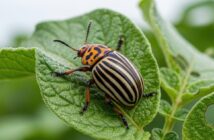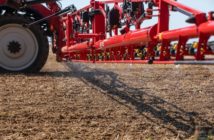Growers of autumn-sown oilseed rape can improve control of Blackgrass with an early season application of carbetamide. That is the advice from David Roberts, Herbicide Technical Specialist for Adama who recommends hitting Blackgrass seedlings when they are small and therefore more susceptible.
“The timeline for establishing oilseed rape often limits the use of cultural techniques to combat Blackgrass, so it is essential to make the correct chemistry choices and to apply those chemicals at the optimal time,” David Roberts explains.
This season’s advice is to treat crops early and to stack actives using the best, most effective products for the job. “A sequenced approach of an early (pre-emergence to 4 true leaves) application of Crawler (600 g/kg carbetamide), followed by propyzamide in November if/when a second flush of grassweeds has emerged will give oilseed rape growers the best chance of keeping ahead of Blackgrass populations,” David continues. “Where blackgrass pressure is extremely high, an effective foliar graminicide should also be considered between the Crawler and propyzamide treatments.”
Crawler kickstarts Blackgrass control by targeting the roots of young, shallow-rooted plants and weakening their resolve to subsequent chemistries: using carbetamide early has been proven to optimise the efficacy of herbicide programmes with propaquizafop and propyzamide. It is also effective against Chickweed and Speedwell, with ryegrasses, meadow grasses and wild oats also showing susceptibility.
“Applying Crawler early in the season as part of an integrated resistance management strategy can cost-effectively deliver more than 96% control of Blackgrass,” David adds. “It also has the added advantage of reducing the risk of chemical losses to water courses due to heavy rainfall. Whenever possible, applications should be made when field drains aren’t running: for extra security and peace of mind, Adama’s free WaterAware app provides an easy to decipher guide, on a location by location basis, of when it is and isn’t advisable to spray.”




